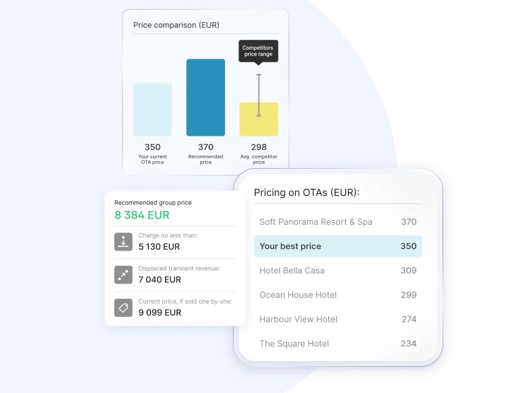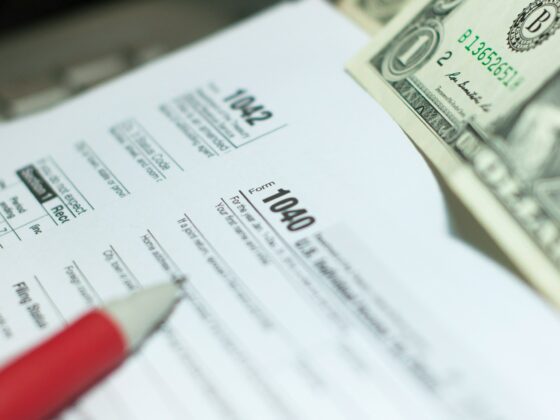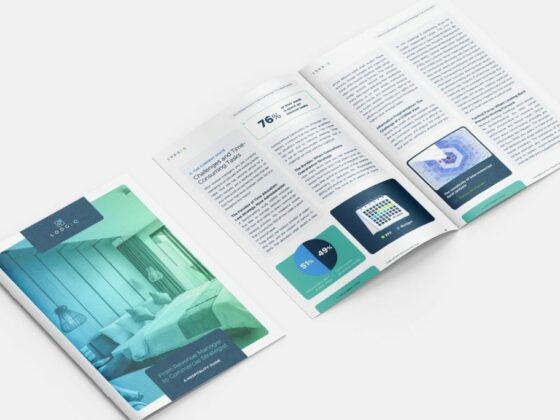The role of supply and demand
Demand for hotel rooms is constantly changing. Things like travel patterns, local events and shifting markets are always making waves. And with constant changes to demand, the pressure is on for pricing to keep up.
In the past, hoteliers had to do this manually. Today, tools can do the heavy lifting. Like Atomize, a Mews company. It analyzes demand patterns and adjusts rates accordingly, so you can find the right balance between attracting guests and driving revenue with minimal effort.
The role of price elasticity
Understanding the price elasticity of your market is important to filling rooms without leaving cash on the table. If your guests are price-sensitive, lowering your rate slightly could mean more heads in beds and more money in the bank. But if price isn’t their main trigger, dropping your rates could mean you’re simply missing out on revenue.

So, by keeping an eye on competitor rates and seeing how guests respond to pricing changes, you can be more strategic and set the best rates to maximize occupancy and revenue.
And the good news? You don’t have to do it manually. For hoteliers using Atomize, this is already built into the pricing algorithm. It automatically analyzes your hotel’s price elasticity and recommends rates that hit the sweet spot to find competitive hotel rates.
The role of price discrimination
Not all guests are created equal. After all, business travelers booking last-minute trips don’t think about price the same way a family planning a week away does.
By analyzing when they book, how long they’ll be staying and where they book from, you can charge the right rate for every kind of guest. No more guesswork and no more missed revenue. Just heads in beds and the confidence that you aren’t leaving money on the table.
The role of competitive analysis and market positioning
Understanding where your hotel sits in the market isn’t just useful, it’s essential. Everything from market positioning and pricing strategy to USPs help make sure your prices appeal to guests, while optimizing profits. But that doesn’t mean you should be copying your competitor’s rates. Far from it.
A smart revenue strategy is about understanding why your competitors charge what they do and how those prices stack up in the eyes of your guests. For example, say your hotel drives pickup at 90% of your competitor’s rate, that’s valuable data. It means you may be able to charge more and still win those bookings.
Take The Local House, for example. With just 18 rooms, this Miami-based boutique hotel needed a revenue management system that uses comp set data to keep their pricing sharp and performance strong. And with a 36% increase in ADR in just 18 months, they’re already seeing impressive results with Atomize, a Mews company.
“With Atomize, we went from manually updating rates once or twice a week to having rates dynamically adjusted throughout the day. It saves us so much time, and we’ve been able to really push the boundaries of what we thought was possible with our pricing.”
Katherine Reyes General Manager
The role of customer loyalty
Loyalty is everything. And it doesn’t come from discounts; it comes from value.
When your rates are fair and your service delivers, guests remember it. They return, leave gushing reviews and recommend your hotel to friends. That’s the kind of reputation that fuels demand. And when a reputation is that good, it justifies a higher price tag.
Ultimately, a strategic approach to competitive hotel rates in revenue management can be a powerful tool to drive growth, now and in the future. Are you ready to stop leaving money on the table? Book your Atomize demo here.







